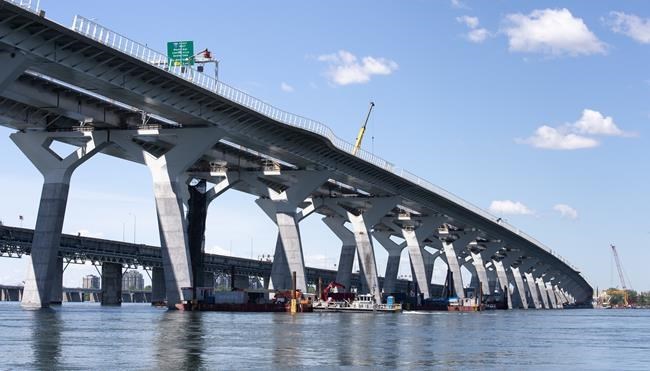Montreal's Samuel-De Champlain Bridge should have a suicide-prevention barrier installed, after a 38-year-old man jumped to his death from the structure last May, a Quebec coroner has recommended.
The existing barrier along the bridge's pedestrian pathway should be made impossible to climb, Dr. Jean E. Brochu said in his report released Jan. 5.
Any able-bodied person could climb the barrier with ease and jump off the structure, the report said. Brochu suggested as a model the anti-suicide fence on the city's Jacques Cartier Bridge, which was installed in 2004 after several people killed themselves jumping off the span.
"When you compare this structure with the one that was installed several years ago on the Jacques Cartier Bridge … it is clear that this one is more difficult, if not impossible to climb," the coroner wrote.
Erik Bouton was seen by security guards on May 22 standing "upright and motionless" on the bridge's pathway before the man jumped onto a highway bordering the St. Lawrence River, the coroner said.
Robert Olson, a research librarian with the Centre for Suicide Prevention, said that because of media attention, some bridges become "suicidal hot spots" and that installing barriers helps prevent deaths.
"If (suicides) happen more frequently (at a bridge) than at other spots in a given city, it broaches the idea of perhaps putting up barriers. It's a recommended practice," Olson said in an interview on Friday.
However, he said that anti-suicide fences are not systematically installed on new bridges because of the cost or for esthetic reasons.
The Champlain Bridge, completed in 2019 through a public-private partnership with the government of Canada, replaced a bridge of the same name built in 1962.
Martin Chamberland, a spokesperson for Signature on the Saint Lawrence Group, a private company that manages the Samuel-De Champlain Bridge, said in an email Friday that a "working committee" has formed to study the coroner's recommendations.
This report by The Canadian Press was first published Jan. 27, 2023.
—
This story was produced with the financial assistance of the Meta and Canadian Press News Fellowship.
Marisela Amador, The Canadian Press




